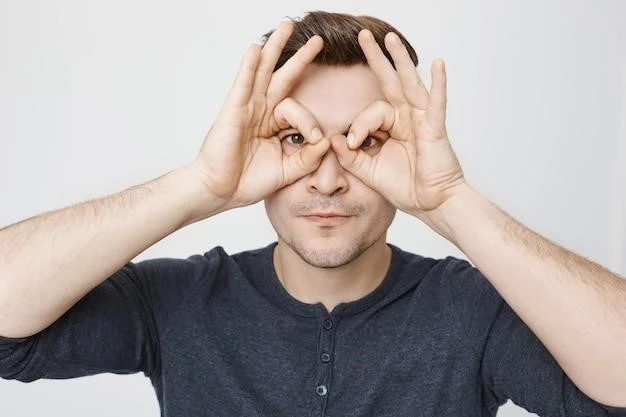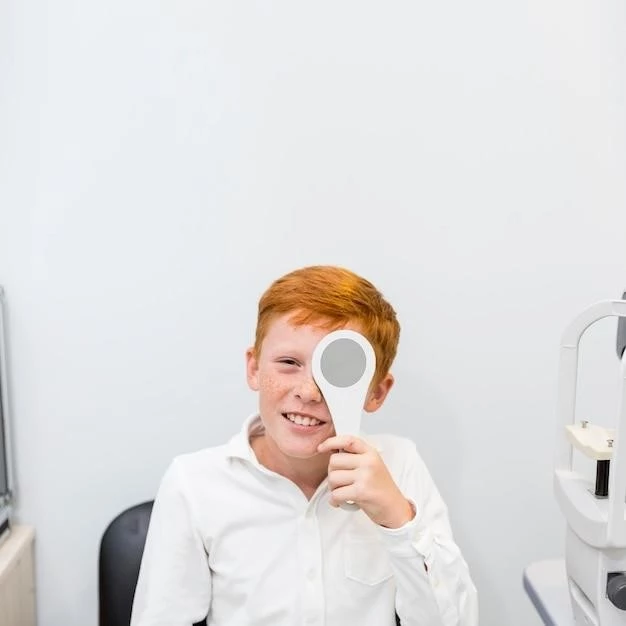Introduction to Syndactyly–Cenani–Lenz type Disease
Cenani-Lenz syndactyly (CLS) is a rare genetic disorder characterized by complex limb malformations. First described in 1967, it presents with complete fusion of fingers and toes, shortening of radius and ulna, and disorganization of phalanges. The syndrome typically affects both upper and lower limbs, with varying degrees of severity.
Definition and Overview
Cenani-Lenz syndactyly (CLS) is a rare genetic disorder primarily characterized by syndactyly/oligodactyly, radioulnar synostoses, and limb shortening. Known for its distinct spoon-hand appearance, this syndrome affects both upper and lower limbs, typically manifesting with various limb malformations and anomalies.

Clinical Features of Cenani-Lenz Syndrome
Cenani-Lenz syndrome (CLS) is a rare genetic disorder characterized by complex limb malformations, most notably syndactyly/oligodactyly, radioulnar synostoses, and limb shortening. The distinct spoon-hand appearance and complete fusion of fingers and toes are key features of this syndrome. CLS typically affects both upper and lower limbs, with varying degrees of severity.
Syndactyly and Oligodactyly
Syndactyly and oligodactyly are key clinical features of Cenani-Lenz syndrome, with patients typically presenting with complete fusion of fingers and toes (syndactyly) and reduced number of digits (oligodactyly). These limb malformations contribute to the distinctive spoon-hand appearance seen in individuals with CLS.
Radioulnar Synostosis
Radioulnar synostosis is a common clinical feature of Cenani-Lenz syndrome, characterized by the abnormal fusion of the radius and ulna. This malformation contributes to the limited range of motion and functional impairments observed in individuals with CLS. The presence of radioulnar synostosis is a key diagnostic indicator for this rare genetic disorder.
Limb Shortness
In Cenani-Lenz syndrome, limb shortness is a common feature characterized by mesomelic shortening of the limbs, with the lower limbs usually less affected than the upper limbs. This condition often presents with varying degrees of limb length discrepancies and may impact the overall limb functionality and mobility of individuals with CLS.
Genetics of Syndactyly–Cenani–Lenz Type Disease
The genetics of Cenani-Lenz syndrome involve autosomal recessive inheritance and genetic heterogeneity. The syndrome is primarily characterized by limb malformations, including complete fusion of fingers and toes, shortening of radius and ulna, and disorganization of phalangeal development.
Autosomal Recessive Inheritance
Cenani-Lenz syndrome follows autosomal recessive inheritance patterns, with the presence of syndactyly, oligodactyly, radioulnar synostosis, and limb shortness. The syndrome is linked to genetic mutations resulting in limb malformations and anomalies commonly seen in affected individuals.
Genetic Heterogeneity
The genetic heterogeneity of Cenani-Lenz syndrome involves various genetic mutations that contribute to limb malformations. While the LRP4 gene is commonly associated with CLS, reports indicate potential involvement of the APC gene and GLI3 locus in certain cases. Understanding these genetic factors is crucial for diagnosing and managing this rare syndromic disorder effectively.
Diagnosis and Differential Diagnosis
Diagnostic evaluation of Cenani-Lenz syndrome typically involves identifying key clinical features such as syndactyly, radioulnar synostosis, and limb shortness. Differential diagnosis may involve distinguishing CLS from other syndactyly types based on the specific limb malformations observed.
Diagnostic Methods
Diagnostic methods for Cenani-Lenz syndrome typically involve clinical assessments to identify hallmark features like syndactyly, radioulnar synostosis, and limb shortness. Genetic testing, imaging studies, and physical examinations play a crucial role in confirming a diagnosis of CLS and distinguishing it from other similar syndactyly conditions.
Distinguishing CLS from Other Syndactyly Types
In distinguishing Cenani-Lenz syndrome (CLS) from other types of syndactyly, clinicians focus on identifying specific features such as the complete fusion of fingers and toes, radioulnar synostosis, and the characteristic spoon-hand appearance seen in CLS. This differentiation aids in accurate diagnosis and treatment planning for individuals with this rare genetic disorder.
Treatment and Management Approaches
Treatment strategies for Cenani-Lenz syndrome typically involve a multidisciplinary approach, including surgical interventions to address syndactyly and limb anomalies, as well as therapeutic considerations to improve functional outcomes and quality of life for individuals affected by this rare genetic disorder.
Surgical Interventions
Surgical interventions play a vital role in the treatment of Cenani-Lenz syndrome, focusing on addressing syndactyly, limb anomalies, and associated structural abnormalities. The goal of surgery is to improve limb function, correct deformities, and enhance overall quality of life for individuals affected by this rare genetic disorder.
Therapeutic Considerations
Therapeutic considerations for Cenani-Lenz syndrome focus on a comprehensive approach to improve functional outcomes and enhance the quality of life for individuals with this rare genetic disorder. Various therapeutic interventions may include physical therapy, occupational therapy, assistive devices, and ongoing multidisciplinary care to address the complex limb malformations associated with CLS.

Prognosis and Complications
Regarding Cenani-Lenz syndrome, the prognosis varies based on the severity of limb malformations. Long-term outlook depends on the extent of functional impairments and surgical outcomes. Potential complications may arise from limited mobility and dexterity in affected limbs.
Long-Term Outlook
The long-term outlook for individuals with Cenani-Lenz syndrome depends on the severity of limb malformations and associated complications. Prognosis varies based on the extent of functional impairments and the effectiveness of treatment approaches. Regular follow-up and individualized care play a crucial role in enhancing the quality of life for those with this rare genetic disorder.
Potential Complications
Potential complications associated with Cenani-Lenz syndrome may include functional limitations, reduced mobility, and challenges in hand dexterity due to the complex limb malformations present in affected individuals. Additionally, the presence of radioulnar synostosis can further impact limb functionality and daily activities.
Research and Recent Advancements
Current studies and findings in the field of Cenani-Lenz syndrome are focused on understanding the genetic basis of the disorder, exploring treatment approaches, and identifying potential therapeutic targets. Emerging research aims to enhance diagnostic methods and improve management strategies for individuals with this rare genetic condition.
Current Studies and Findings
Current studies on Cenani-Lenz syndrome are focused on elucidating the underlying genetic mechanisms and exploring innovative treatment options for individuals with this rare genetic disorder. Recent advancements aim to improve diagnostic accuracy, enhance surgical outcomes, and advance personalized care for patients affected by CLS.
Emerging Therapies
Emerging therapies for Cenani-Lenz syndrome focus on novel treatment approaches and personalized interventions to address the complex limb malformations associated with this rare genetic disorder. Ongoing research aims to identify innovative therapeutic targets and enhance outcomes for individuals affected by CLS through advanced medical technologies and interventions.
Case Studies and Patient Experiences
Reported cases of Cenani-Lenz syndrome highlight complex limb malformations and their impact. Understanding individual experiences and challenges is crucial for tailored care and support services.
Reported Cases of Syndactyly–Cenani–Lenz Type
Several reported cases of Cenani-Lenz syndrome highlight the diverse limb malformations and associated anomalies seen in affected individuals. These cases provide valuable insights into the diagnostic challenges and management of this rare genetic disorder, shedding light on the unique experiences of patients with CLS.
The impact of Cenani-Lenz syndrome on the quality of life of affected individuals is significant, as complex limb malformations can lead to functional limitations, challenges in mobility, and potential psychosocial effects. Understanding the impact on daily activities and overall well-being is essential for providing comprehensive care and support.
Support Resources for Individuals and Families
For individuals and families affected by Cenani-Lenz syndrome, accessing support groups and counseling services can provide valuable emotional and practical assistance. These resources offer a network of understanding and guidance to navigate challenges associated with the condition.
Support Groups
Support groups dedicated to Cenani-Lenz syndrome offer individuals and families a valuable network for sharing experiences, receiving emotional support, and accessing resources for coping with the challenges associated with this rare genetic disorder. These groups provide a sense of community and understanding for those navigating the complexities of CLS.
Counseling Services
Accessing counseling services is essential for individuals and families affected by Cenani-Lenz syndrome to cope with emotional challenges, address psychosocial aspects, and navigate the complexities of living with this rare genetic disorder. Counseling can offer support, guidance, and strategies to enhance overall well-being and resilience.
Healthcare Providers and Specialists
Specialists in syndactyly treatment and centers of excellence play a crucial role in providing comprehensive care for individuals with Cenani-Lenz syndrome. These healthcare providers have expertise in managing complex limb malformations and can offer tailored treatment plans to address the unique needs of patients with this rare genetic condition.
Impact on Quality of Life
The impact of Cenani-Lenz syndrome on the quality of life of individuals and families is substantial due to the complex limb malformations and associated challenges. Coping with functional limitations, mobility issues, and psychosocial impacts requires comprehensive support and understanding from healthcare providers and support networks.
Centers of Excellence
Centers of Excellence specializing in syndactyly treatment offer highly skilled healthcare professionals equipped with expertise in addressing the complex limb malformations associated with Cenani-Lenz syndrome. These centers provide specialized care and advanced treatment options to optimize outcomes for individuals affected by this rare genetic condition.
Global Prevalence and Epidemiology
Incidence rates and geographical distribution of Cenani-Lenz syndrome highlight its rare occurrence worldwide and the specific populations affected. Understanding the global prevalence and epidemiology of this genetic disorder is essential for identifying at-risk individuals and providing timely interventions.
Incidence Rates
The incidence rates of Cenani-Lenz syndrome are low worldwide, with fewer than 30 cases described, mostly occurring in related families. This rare genetic disorder presents complex limb malformations, such as syndactyly, radioulnar synostosis, and limb shortness, highlighting the specificity and rarity of the condition.
Geographical Distribution
Cenani-Lenz syndrome exhibits a global distribution, with reported cases identified primarily in related families. The rarity of this syndrome highlights its unique geographical distribution, emphasizing the importance of accurate diagnosis and specialized care for affected individuals across different regions.
Ethical Considerations in Syndactyly Care
When providing care for individuals with Cenani-Lenz syndrome, ethical challenges may arise in treatment decisions, patient autonomy, and ensuring equitable access to specialized care. Upholding patient rights, informed consent, and preserving dignity are essential ethical considerations in managing this rare genetic disorder.
Patient Rights and Advocacy
Protecting patient rights and advocating for individuals with Cenani-Lenz syndrome is essential in ensuring equitable access to quality care, promoting autonomy, and addressing ethical considerations in healthcare decision-making. Patient advocacy plays a critical role in upholding ethical standards and fostering a supportive environment for those affected by this rare genetic disorder;
Addressing ethical challenges in the treatment of Cenani-Lenz syndrome involves considerations regarding patient autonomy, informed consent, and ensuring equitable access to specialized care. Healthcare providers must navigate complex decision-making processes while upholding ethical principles and providing compassionate care to individuals affected by this rare genetic disorder.
Future Directions in Syndactyly Research
Considering the unique challenges of Cenani-Lenz syndrome, future research initiatives aim to explore novel therapeutic targets, collaborative initiatives, and cutting-edge technologies to advance treatment options and improve outcomes for individuals affected by this rare genetic disorder.
When treating individuals with Cenani-Lenz syndrome, ethical dilemmas may arise concerning procedures, patient autonomy, and fair resource allocation. Healthcare professionals must navigate these challenges prudently, ensuring that decisions are made in the best interest of the patients while upholding ethical standards.
Collaborative Initiatives
Collaborative initiatives in syndactyly research aim to foster partnerships between researchers, healthcare providers, and patient advocacy groups to advance understanding, treatment options, and outcomes for individuals with Cenani-Lenz syndrome. By working together, these collaborations can drive innovative approaches and enhance the quality of care for those affected by this rare genetic condition.
Educational Initiatives and Awareness Campaigns
Public health initiatives and educational materials for healthcare professionals play a vital role in raising awareness about Cenani-Lenz syndrome, promoting early diagnosis, and enhancing the understanding of treatment options for individuals and families affected by this rare genetic disorder.
Ethical Challenges in Treatment
When providing care for individuals with Cenani-Lenz syndrome, healthcare providers may encounter ethical dilemmas related to treatment decisions, patient autonomy, and resource allocation. Navigating these challenges requires a delicate balance between medical expertise, ethical principles, and patient-centered care to ensure the best possible outcomes for those affected by this rare genetic disorder.
Educational Materials for Healthcare Professionals
Educational materials tailored for healthcare professionals play a crucial role in enhancing clinical knowledge, promoting early recognition of Cenani-Lenz syndrome, and facilitating appropriate management strategies for patients with this rare genetic disorder. These resources aim to increase awareness and improve outcomes through evidence-based practice and specialized care.
Conclusion⁚ Advances in Syndactyly–Cenani–Lenz Type Disease Understanding
Enhanced knowledge of Cenani-Lenz syndrome, including the genetic basis and clinical manifestations, has paved the way for improved diagnosis and treatment strategies. Ongoing research and collaborative efforts are essential in furthering our understanding of this rare genetic disorder and advancing patient care through innovative approaches and specialized interventions.
